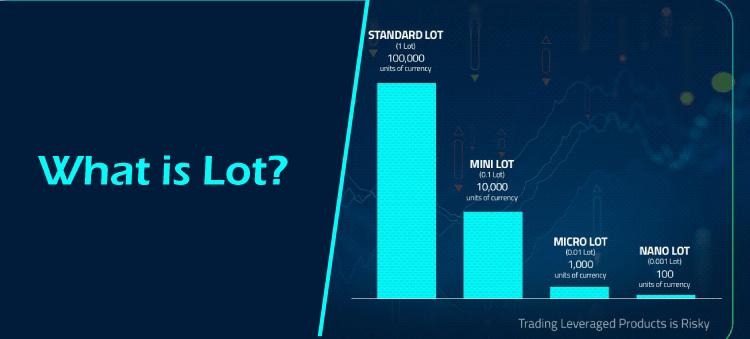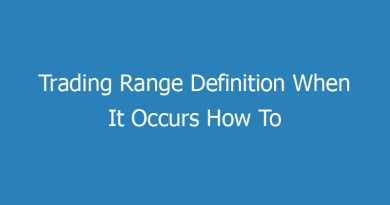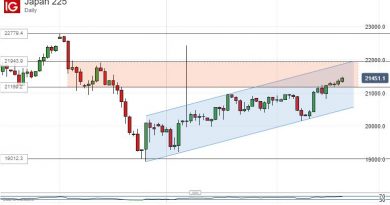Lot What It Means in Stock and Bond Trading Types and Examples

Lot in Securities Trading
Lots in securities and trading represent the number of units of a financial instrument bought on an exchange. The number of units is conveyed by the lot name. A round lot is 100 shares in the stock market, but any number of shares can be bought. An odd lot is when fewer than 100 shares are bought.
Key Takeaways:
– A lot is the number of units of a financial instrument traded on an exchange.
– A round lot is 100 share units for stocks, but any number of shares can be traded.
– A bond lot can vary. They’re sometimes $100,000 or $1 million but face values that individual investors can purchase may be as low as $1,000.
– A trader can buy or sell as many futures as they like, but the underlying amount that a contract controls is fixed based on the contract size.
How a Lot Works:
Investors and traders purchase and sell financial instruments in the capital markets with lots. A lot is a fixed quantity of units that depends on the financial security being traded.
The typical lot size for stocks was round lots of 100 shares until online trading. A round lot can also refer to a number of shares that can be evenly divided by 100, such as 300, 1,200, or 15,500 shares.
Odd lots and mixed lots are more common. An odd lot is an order for less than 100 shares. Mixed lots are a number of shares above 100 but not divisible by 100. The round lot for exchange-traded securities such as an exchange-traded fund (ETF) is 100 shares, similar to stocks.
Types of Lots:
The exact nature of lots depends on what is being traded.
Bonds:
The bond market is dominated by institutional investors who buy debt in large sums. A round lot for U.S. government and corporate bonds is considered to be $1 million in some circles, but it can also be $100,000. This is the case with municipal bonds.
A trader or investor doesn’t have to buy bonds in that quantity. Bonds typically have a face value of $1,000 to $10,000, and some are even lower. An investor can buy as many bonds as they like, but it may still be an odd lot.
Options:
A lot in options represents the number of contracts contained in one derivative security. One equity options contract represents 100 underlying shares of a company’s stock. The lot for one options contract is 100 shares.
Let’s say an options trader purchased one Bank of America (BAC) call option last month. The option has a strike price of $24.50 and it expires this month. The options holder can purchase 100 shares of BAC at the strike price of $24.50 if they exercise their call option today when the underlying stock is trading at $26.15.
One option contract gives an investor the right to purchase the lot of 100 shares at the agreed strike price.
Investors always know exactly how many units they’re buying with each contract with this kind of standardization. They can easily assess what price per unit they’re paying. Valuing and trading options would be needlessly cumbersome and time-consuming without such standardization.
The smallest options trade an investor can typically make is for one contract. This represents 100 shares, but it’s possible to trade options for a smaller amount with mini-stock options that have an underlying share amount of 10.
Futures:
Lots are known as contract sizes in the futures market. The underlying asset of one futures contract could be an equity, a bond, interest rates, a commodity, an index, or a currency. The contract size varies depending on the type of contract being traded.
One futures contract for corn, soybeans, wheat, or oats has a lot size of 5,000 bushels of the commodity. The lot unit for one Canadian dollar futures contract is 100,000 CAD. It’s 62,500 GBP for one British pound contract, 12,500,000 JPY for one Japanese yen contract, and 125,000 EUR for one euro futures contract.
The standard contract sizes for options and futures are fixed and non-negotiable, unlike stocks, bonds, and ETFs in which odd lots can be purchased. Derivative traders who are purchasing and selling forward contracts can nonetheless customize the contract or lot size of these contracts because forwards are non-standardized contracts created by the parties involved.
Standardized lots are set by the exchange, allowing for greater liquidity in the financial markets. Increased liquidity comes with reduced spreads, creating an efficient process for all participants involved.
Forex Lots:
There are micro, mini, and standard lots when trading currencies. A micro lot is 1,000 of the base currency. A mini lot is 10,000, and a standard lot is 100,000.
It’s possible to exchange currencies at a bank or currency exchange in amounts less than 1,000, but the smallest trade size is typically 1,000 unless expressed stated otherwise when trading through a foreign exchange broker.
Is It Better to Invest in Bonds or Stocks?
It can depend a great deal on your goals. Stocks might be more appropriate if you’re planning to leave your money invested over a long period of time. Bonds tend to be safer in the short term, but they’ll most likely be worth less than stocks in the long term.
What Is a Lot in Forex Trading?
A lot in forex represents 100 shares of the underlying stock, but forex is traded in micro (1,000 of base currency), mini (10,000 of base currency), and standard lots of 100,000.
What Are Futures?
A future is a contract to sell or buy a security at a future point in time at a price established at the time the contract is entered into. The "future" date is often the time when the commodity will be delivered.
The Bottom Line:
Trading in lots isn’t as much of a concern in the options and futures markets because you can trade any number of these contracts as you like. Each stock option represents 100 shares, and each futures contract controls the contract size of the underlying asset.
An investor can trade a minimum of 1,000 of the base currency in forex in any increment of 1,000. They could trade 1,451,000: 14 standard lots, five mini lots, and one micro lot. They can trade in odd lots of less than 100 shares in a stock trade. The importance of lots depends a great deal on what you’re trading.



